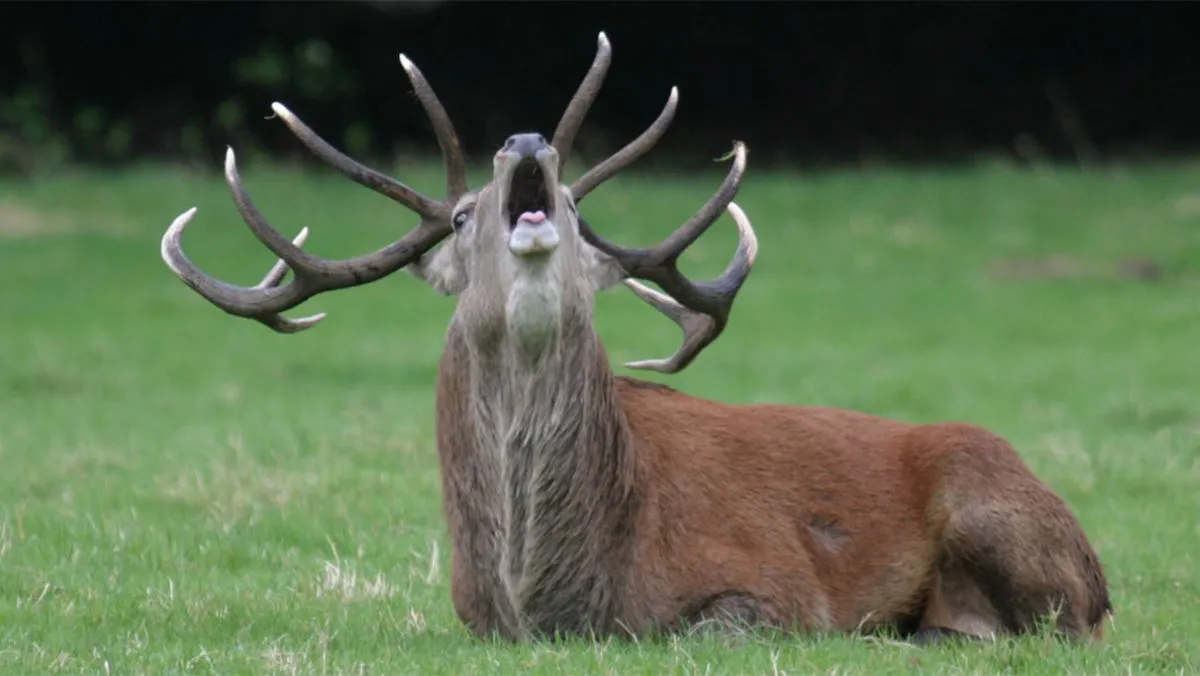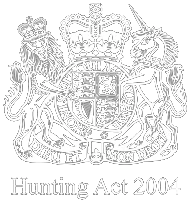
In the UK three registered deer hunting packs were operating before the Hunting Act came into force which hunted the red deer. They were located in the south west of England and were the Devon and Somerset Staghounds, the Quantock Staghounds and the Tiverton Staghounds. Before disbanding in 1997 the New Forest Buckhounds hunted the male fallow deer. Roe deer were also hunted by at least two unregistered packs of buckhounds and were based in the south west of England.
The hunting of red deer was divided into three phases, based on the sex and age of the deer. From the beginning of August to the end of October mature stags were hunted; from November to the beginning of March hinds were hunted and during March and April young stags were hunted. During the stag hunting season, the hunt employed a harbourer whose role was to select one or more suitable stags for hunting. He was a local deer expert who would question local residents the day before the hunt about the presence of deer and look out for any evidence of deer such as fresh footprints (“slots”). At dawn on the day of the hunt the harbourer would return to the location and watch the movement of the deer and then inform the huntsman of the deer’s whereabouts once he was satisfied that they would not move too far away from the area. The huntsman would arrive at the location with about ten experienced hounds known as “tufters” which would be used to separate the chosen stag from the rest of the herd. Once the harbourer was satisfied that the correct stag had been separated the whipper-in would collect the rest of the pack, numbering twenty to thirty hounds. The whole pack would then be laid on to the scent or line of the stag, which could be several miles away at this point.
During the hind hunting season a harbourer was not employed to select a particular individual as the hinds were almost indistinguishable. Initially, the tufters were laid onto a herd of hinds and once a hind had broken away from the main group the rest of the hounds were brought in and the whole pack then laid onto the single hind. Often the hind would have last year’s calf with her. During the days hunting several hinds could be hunted at different times due to the hind merging with a herd and another breaking away.
The length and duration of the hunt could vary considerably. The pursuit could last less than an hour or last all day. On average the overall time of the actual hunt was around 3 hours and the distance was 19 km. The pursuit of the deer itself consisted of intermittent flights; the deer would run away from the hounds at speed, exerting itself maximally until sufficient distance had been built up between it and the hounds after which the deer would slow down or even lay down. At this stage the deer could be 3 or 4 km ahead of the hounds. The hound may lose the scent and cast around to find it again. A series of successive flights would continue until the deer escaped or became exhausted. In the latter case the stag would stop running and “stand at bay” where it would turn and face the hounds. Hinds also stopped but would often hide by laying down in suitable cover. The hounds would surround the deer and bark, but would not kill the deer. Although the hounds were trained not to attack or savage the deer it has been known for this to happen on occasions. The hounds kept the deer at bay until the huntsman and gun carrier arrived to dispatch the deer.
While the deer was focused on the hounds it was approached by a member of the hunt carrying a firearm. Several hunt followers would be carrying a firearm and the nearest available gun carrier would shoot the deer, which would be carried out at close quarters by a single shot to the head. In some cases, however, the deer was not killed immediately and would move off wounded. In this instance the hounds would re-find the injured deer and bring it to bay so that it could be killed.
The carcass was then taken to an open field either near to or at the meet or to one in the district where the deer was found and where the hunt followers could gather and watch the butchering and sharing out of the carcass, known as the “carve up”. During the carve up various parts of the deer were shared out; the heart was given to the owner of the land where the deer was killed; the liver was cut up and distributed to various supporters of the hunt and the slots and teeth were distributed as trophies. The offal was fed to the hounds and the remaining carcass was taken to the kennels where it was butchered. An appointed “venison distributor” would share the meat among the local farmers. The huntsman kept the skin and the head; if it was a stag the head would be retained by one of the masters and mounted.

